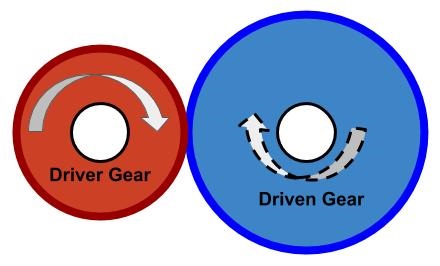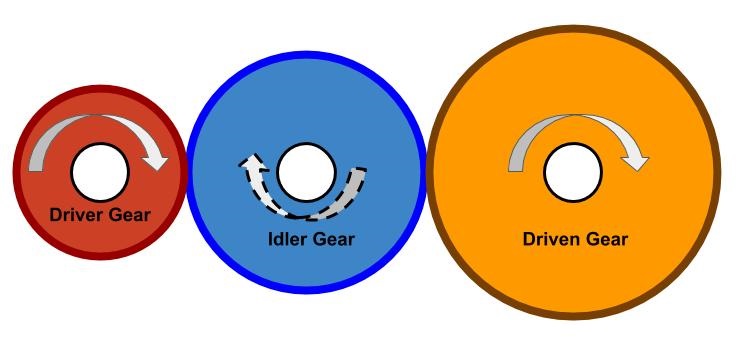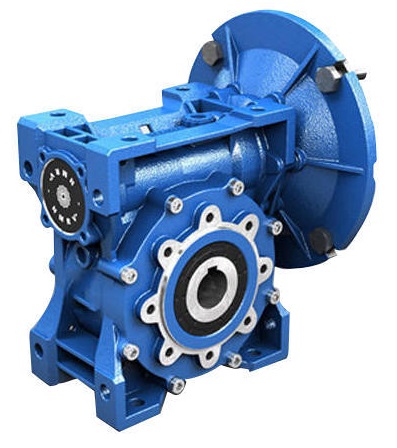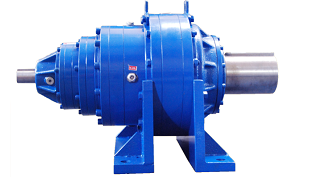What is Gear Reduction?
Gear Reduction or Reduction drives reduce the speed and increase torque at the output shaft. In Reduction Drive, the number of teeth on the input shaft is less than the teeth on the output shaft.

Gear Reduction Ratio
We can calculate the gear reduction ratio similar to the gear ratio. But the only difference is in reduction gear drive, arrangement of gears in such a way that the Output shaft has high torque and low speed compared to the input shaft.
Mathematically gear ratio is equal to the ratio of the number of teeth on the driven (Output) gear and Driver (input) Gear. Therefore if the gear ratio is greater than one, the gear drive works as a reduction drive.

Gear Reduction Applications
Gear Reducers reduce the speed of the driven or output shaft and increase transmission torque. They can have the following applications.
- Reduction gear drives control the speed and torque transferred to the car transmission from the engine.
- Reduction gearboxes increase output torque and reduce the speed of a dc motor.
- Reduce errors in robotic motions.
Types and Mechanisms of a Gear Reducer ?
Gear Reducers deliver a fixed gear reduction ratio in a transmission system. According to how we are achieving the gear reduction and the type of gear, we can classify gear reducers into the following types:
- Parallel Axis Gear Train.
- Perpendicular Axis Worm and Worm Wheel Gear Reducers.
- Perpendicular Axis Bevel Gear Reducers.
- Planetary Gear Boxes
Parallel Axis Gear Reducers

Parallel axis gear trains utilize spur, helical, or herringbone gears to reduce the speed and increase torque between parallel Axis. They have advantages of simple design and low cost. But They are relatively large and have applications where low gear ratio reduction is required.
Perpendicular Axis Worm Gear Reducers
Similar to worm gears, Worm gear Reducers reduces speed and increases the torque of two perpendicular shafts. They have applications in material handling equipment and convener systems.

Worm wheel can not drive the worm in worm wheel drive. Therefore worm gear reducers are non-reversible. They have advantages of low cost, high transmission ratio, low vibrations, and low noise. But Worm Gear Reducers has disadvantages of heating up and low accuracy.
Perpendicular Axis Bevel Gear Reducers
Similar to worm gear reducers, Bevel gear reducers transfer power to the perpendicular axis at reduced speed and high torque. They have applications in synchronous and asynchronous motors, agriculture equipment, and other high torque transfer applications.
Bevel gear reducers have advantages of robust Design, compact size, low noise, and vibrations.
Planetary Co-axial Gear Reducers
Planetary gearbox transfer power co-axially is very compact. They have applications in robotic motors and where we need high torque and low speed.

Planetary Gear Reducers has the advantage of compact size and high efficiency. But they are high manufacturing and maintenance costs and complex in design.
To sum up, Reduction gears reduce output shaft speed and increase torque. We suggest you also read this article on Gear Terminology ( Various Terms used in Gears).
We will keep adding more details on the reduction drive. Add your suggestions, comments, or questions on reduction drive or gear reducers in the comment box.

Add a Comment